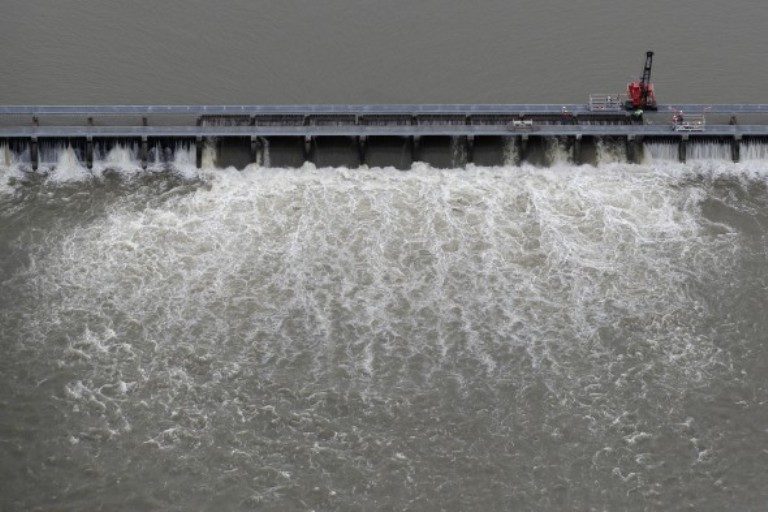
The Army Corps of Engineers opened the Bonnet Carré Spillway Friday afternoon, May 10. This is the fourteenth operation of the structure since 1937, and the first time it has been opened twice during the same high-water event. The spillway was first opened this year on Feb. 27.
The decision to open Bonnet Carré was issued by Maj. Gen. Richard G. Kaiser, commander of the Mississippi Valley Division in Vicksburg, Mississippi.
Maj. Gen. Richard "Rick" Kaiser, Commander, Mississippi Valley Division (US Army Corps of Engineers) and President of the Mississippi River Commission, briefed the public on the opening of the Bonnet Carre' Spillway.
"This is the wettest we've been in 124 years," said Maj. Kaiser.
The spillway, located about 12 miles west of New Orleans, diverts floodwaters from the Mississippi River to the Gulf of Mexico via farmlands and Lake Pontchartrain instead of passing near New Orleans and other river communities.
According to the National Weather Service, this is the first time the spillway has been used in consecutive years.
Officials decided to open the spillway to "relieve pressure on main levels, maintain river stages and regulate the flow downriver from the spillway," according to the U.S. Army Corps of Engineers.
According to AccuWeather Senior Meteorologist Kristina Pydynowski, major river flooding continues at Baton Rouge, Louisiana, farther up from the spillway.
"On May 21, 2019, this flood event will become the longest in duration since the 135-day-long flood event in 1927 at Baton Rouge," Pydynowski said. "The river went above flood stage during the morning of Jan. 6 and is forecast to remain out of its banks through at least mid-June," Pydynowski said.
"River flooding may continue into June as floodwaters in rivers farther north travel southward and add onto the ongoing flooding along the lower Mississippi River," AccuWeather Meteorologist Brett Rathbun said.
"The Mississippi River was out of its banks at Baton Rouge even as the city recorded below-normal rainfall through January, February and March," Pydynowski added.
During that time, floodwaters were draining in from heavy rain and melting snow upstream.
"The flood event was exacerbated as nearly triple the normal amount of rain has soaked Baton Rouge since April 1," Pydynowski stated.
Following a drier-than-normal March, rainfall at New Orleans have been more than 200 percent above average since the start of April.
In an abundance of caution, the operation date was moved forward to ensure the safe passage of this high water by limiting the elevations downriver of the spillway.
Since the opening of the spillway, the Mississippi River at New Orleans dropped below minor flood stage of 17 feet this past weekend.
The river, however, briefly spiked above that threshold after heavy rain soaked the city on Sunday morning but has since dropped back down below it.
"Flood events prior to the 1927 flood were much longer in duration at Baton Rouge, according to information from the National Weather Service, before Federal Flood Controls were installed in accordance with the Flood Control Act of 1928," Pydynowski said.



Comment: Historic Mississippi River flooding could extend into June, experts warn